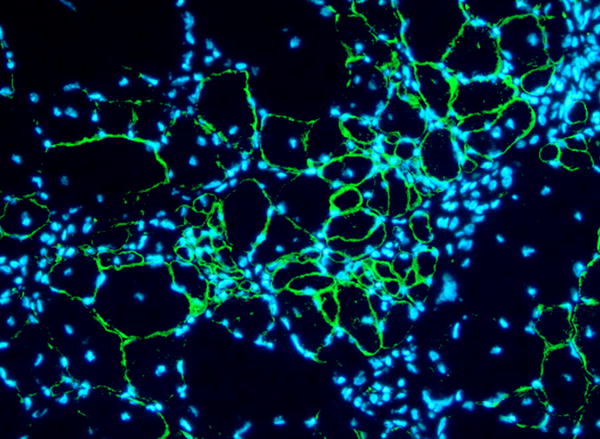Stem cells have been the new trend in the field of science for several decades now. However, there is still much to be learned from them. With the molecular mechanics of RNA Polymerase II figured out, we can learn more about stem cell gene expression and expression requirements for stem cell development. This includes learning how RNA Polymerase II interacts with transcription initiation factors.
In order for RNA Polymerase II to effectively transcribe a gene, a specific transcription factor must be present to locate the promoter for the gene and increase the binding affinity of RNA Polymerase II to the promoter site. It has been found that in embryonic stem cells, the protein Srb7 is essential for transcription for most protein-encoding genes in vivo and for cell viability. Srb7 was found to associate exclusively with the high molecular weight form of RNA Polymerase II, which is responsible for active transcription. It has been suggested that regulation of Srb7 by the protein Med could play a vital role in the regulation of transcription initiation, which is important for the cell cycle. However, in differentiated cells, it is unclear whether or not Srb7 has an essential role in gene expression, or if it has a general role (Tudor et al. 1999).
In another study, the signaling for stems cells to differentiate is controlled by three proteins: OCT4, SOX2, and NANOG. These proteins are able to regulate one another, either individually or as heterodimers (e.g. OCT4-SOX2). In certain concentrations, they keep the stem cell in its pluripotent stage, and in different concentrations, they stimulate cell differentiation (Chickarmane et al. 2006). There may be a number of other proteins that help mediate or play an essential role in this process. Environmental factors also play a role in cell differentiation, which can stimulate neighboring cells to differentiate, as seen in embryonic development.
Understanding how RNA Polymerase II interacts with initiation factors, transcription factors, and other proteins that influence cell differentiation will aid in the understanding of how the cell works as a unit and not as a mass of individual systems that are semi-independent of one another. It will also give insight to how to manipulate embryonic stem cells to promote healthy, viable cells that will cure diseases. Gene expression regulation and the interaction with RNA Polymerase II will further the pursuit of finding cures for incurable diseases.
